The Salem Trilogy
Other Illustrated Books:
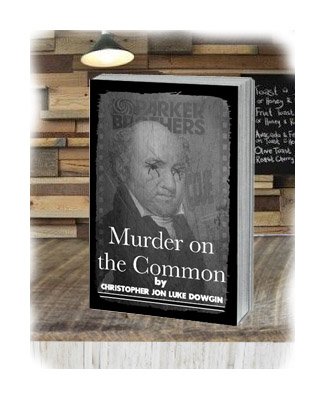
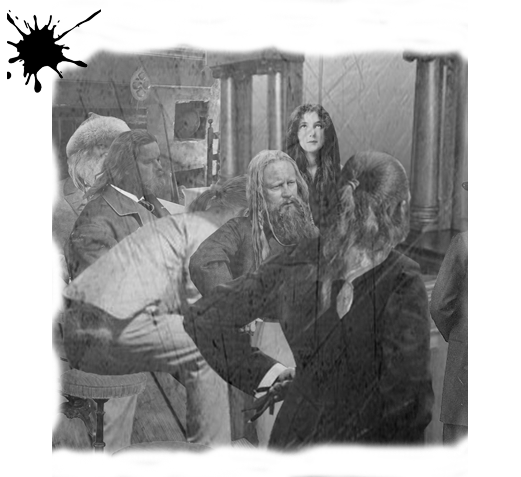
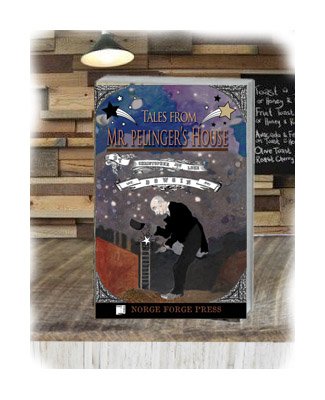
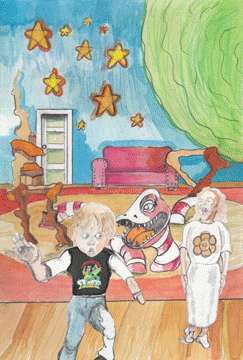
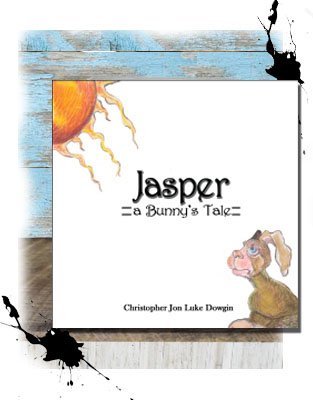




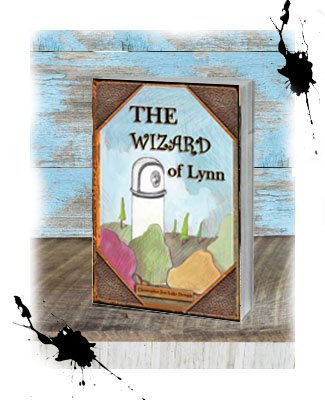



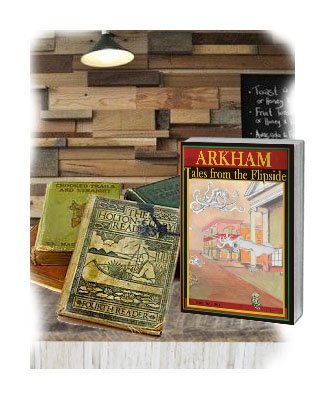
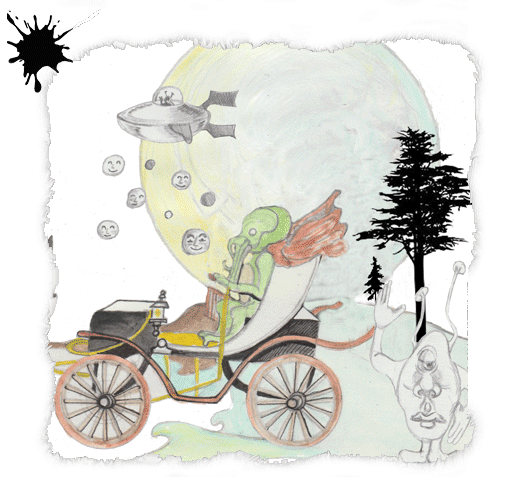
Non-Fiction

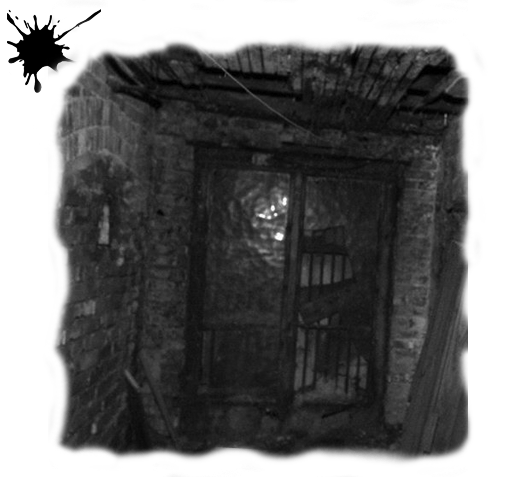

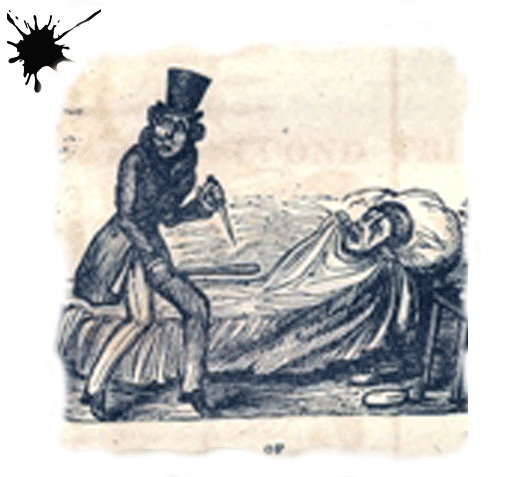

Matt Maguire
Contributing author and illustrator of Arkham Tales from the Flipside
Matt graduated from The Lorenzo de' Medici International Institute for Art in Florence and has gone on to work for Image, Marvel, and Top Cow comics. He has worked on titles like Wolverine, The Darkness, and many more. He has written and illustrated several stories for Heavy Metal. He is also the owner of Compass Rose Custom Tattoo Shop.
Author of The Wheel Arkham Tales from the Flipside Winter 2019 Issue
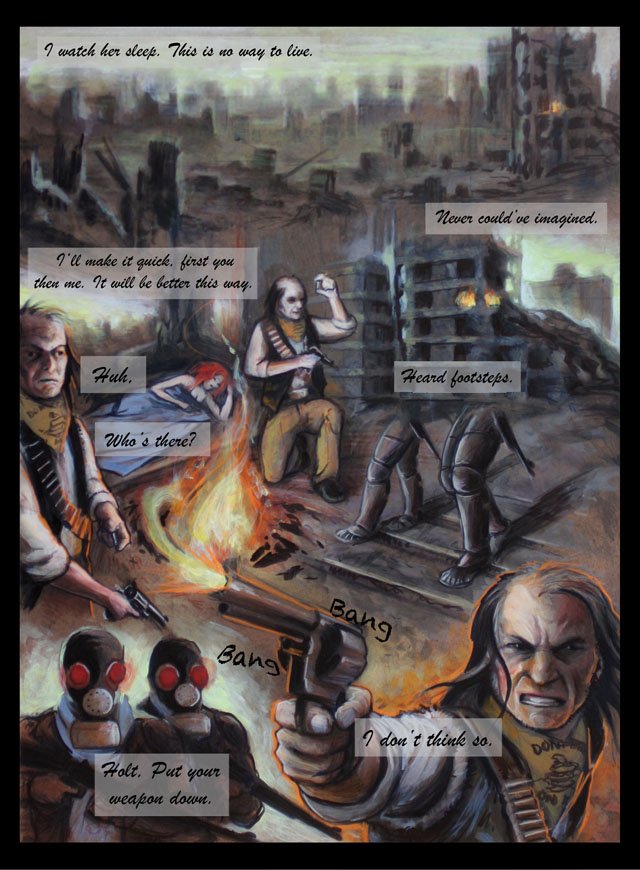

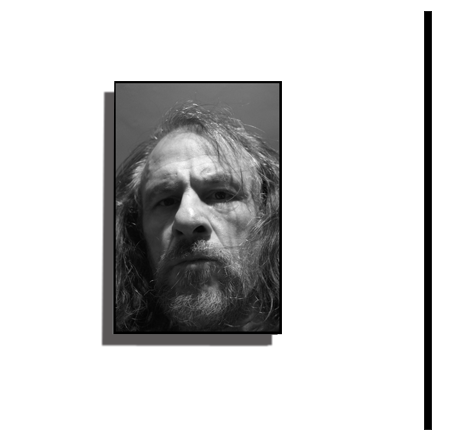 Richard Aliberti
Richard Aliberti
Eminent Artist of Boston's North End. Many of his bronze work are scattered throughout this historic neighborhood. He also is an Industrial musician with a few albums out. His work also shows in various galleries in NYC.


Sheila Farren-Billings
Sheila is from the same creative family as Charlie Farren (Farrenheit and Joe Perry Project). A showing artist in many galleries of the North Shore of Boston. Shelia taught art in Salem High School for over 20 years.

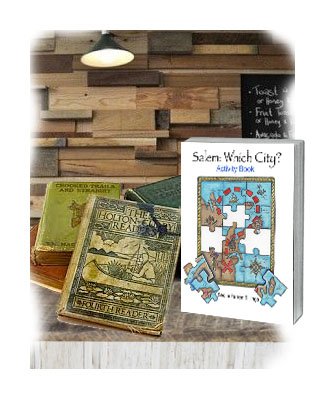

 Matthew Fraser
Matthew Fraser
Educator and linguist. He has taught on the college and high school level and he brings his knowledge gained through experience and his research to better help guide our youth of New England toward better higher education choices.
He is also the writer of several language books.
In his free time, he is always looking for a good pickup game in Basketball.

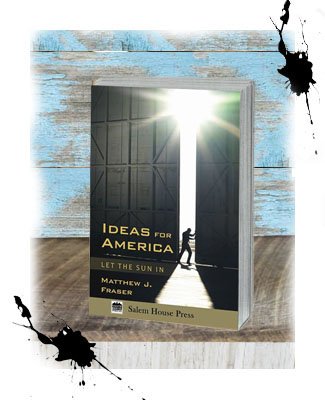


Gerald Dowgin
Gerald Dowgin spent over 30 years drafting bills for the State of NJ. His grandfather, Edward Hulton of Hulton & Co. Newspapers in Manchester England, would tour the neighborhood delivering gifts for the children in the town. His mother was 18 till she found out that her father was the neighborhood Santa working for the Head Honcho on the North Pole.
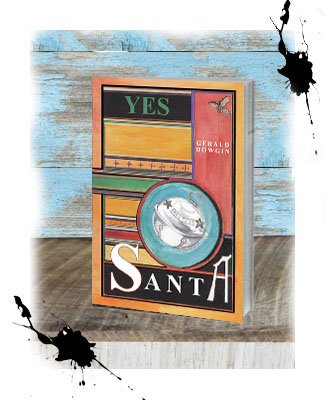


Peter Newell 
( March 5, 1862 – January 15, 1924)
Newell built a reputation in the 1880s and 1890s for his humorous drawings and poems, which appeared in Harper's Weekly, Harper's Bazaar, Scribner's Magazine, The Saturday Evening Post, Judge, and other publications. He later wrote and illustrated several popular children's books, such as Topsys and Turvys (1893), a collection of poems and images which could be viewed upside-down or right-side-up; The Hole Book (1908), which had a literal hole at the center of each page to indicate the path of a bullet; and The Slant Book[ (1910), which took the shape of a rhomboid and told the story of a baby carriage careening down a hill.
Newell often illustrated the works of other authors, such as Mark Twain, Stephen Crane, John Kendrick Bangs, and Lewis Carroll. He also created a comic strip serial, The Naps of Polly Sleepyhead, which debuted in the New York Herald in 1905. He died in Little Neck, New York in 1924.
Newell's great granddaughter, Laura Lydecker, was also an artist and children's book illustrator. Lydecker illustrated editions of Wind in the Willows and The Country Mouse and the City Mouse.
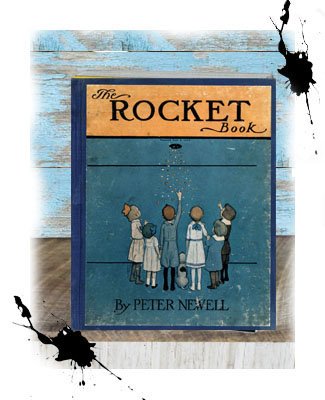


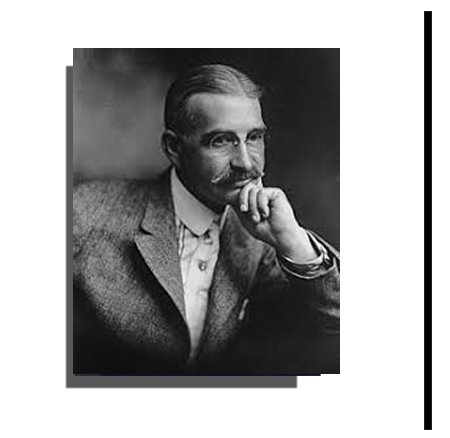 L. Frank Baum
L. Frank Baum
( May 15, 1856 – May 6, 1919)
Baum was an American author chiefly famous for his children's books, particularly The Wonderful Wizard of Oz and its sequels. He wrote 14 novels in the Oz series, plus 41 other novels, 83 short stories, over 200 poems, and at least 42 scripts.



Nathaniel Hawthorne 
(July 4, 1804 – May 19, 1864)
He was born in 1804 in Salem, Massachusetts, to Nathaniel Hathorne and the former Elizabeth Clarke Manning. His father was on the ship America when it sailed the first drunk elephant to America. His ancestors include John Hathorne, the only judge from the Salem witch trials who never repented his involvement. Hawthorne entered Bowdoin College in 1821, was elected to Phi Beta Kappa in 1824, and graduated in 1825. He published his first work in 1828, the novel Fanshawe; he later tried to suppress it, feeling that it was not equal to the standard of his later work. His literary career started covering the murder of Joseph White in 1830 for the Salem Gazette. This was the murder Clue was based on. He published several short stories in periodicals, which he collected in 1837 as Twice-Told Tales. The following year, he became engaged to Sophia Peabody. He worked at the Salem Custom House and joined Brook Farm, a transcendentalist community, before marrying Peabody in 1842. The couple moved to The Old Manse in Concord, Massachusetts, later moving to Salem, the Berkshires, then to The Wayside in Concord. The Scarlet Letter was published in 1850, followed by a succession of other novels. A political appointment as consul took Hawthorne and family to Europe before their return to Concord in 1860. Hawthorne died on May 19, 1864, and was survived by his wife and their three children.
Much of Hawthorne's writing centers on New England, many works featuring moral metaphors with an anti-Puritan inspiration. His fiction works are considered part of the Romantic movement and, more specifically, dark romanticism. His themes often center on the inherent evil and sin of humanity, and his works often have moral messages and deep psychological complexity. His published works include novels, short stories, and a biography of his college friend Franklin Pierce, the 14th President of the United States.



H. Rider Haggard
(22 June 1856 – 14 May 1925)
After returning to England in 1882, Haggard published a book on the political situation in South Africa he experienced, as well as a handful of unsuccessful novels, before writing the book for which he is most famous, King Solomon's Mines. He accepted a 10 percent royalty rather than £100 for the copyright.
A sequel soon followed entitled Allan Quatermain, followed by She and its sequel Ayesha, swashbuckling adventure novels set in the context of the Scramble for Africa (although the action of Ayesha happens in Tibet). The hugely popular King Solomon's Mines is sometimes considered the first of the Lost World genre. She is generally considered to be one of the classics of imaginative literature and with 83 million copies sold by 1965, it is one of the best-selling books of all time. He is also remembered for Nada the Lily (a tale of adventure among the Zulus) and the epic Viking romance, Eric Brighteyes.
His novels portray many of the stereotypes associated with colonialism, yet they are unusual for the degree of sympathy with which the native populations are portrayed. Africans often play heroic roles in the novels, although the protagonists are typically European (though not invariably). Notable examples are the heroic Zulu warrior Umslopogaas and Ignosi, the rightful king of Kukuanaland, in King Solomon's Mines. Having developed an intense mutual friendship with the three Englishmen who help him regain his throne, he accepts their advice and abolishes witch-hunts and arbitrary capital punishment.
Three of Haggard's novels were written in collaboration with his friend Andrew Lang who shared his interest in the spiritual realm and paranormal phenomena.
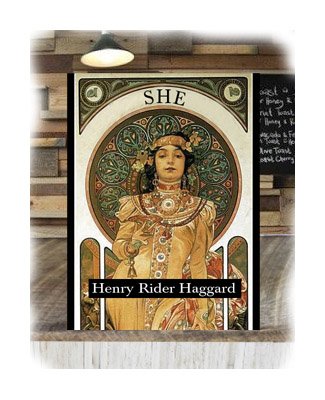
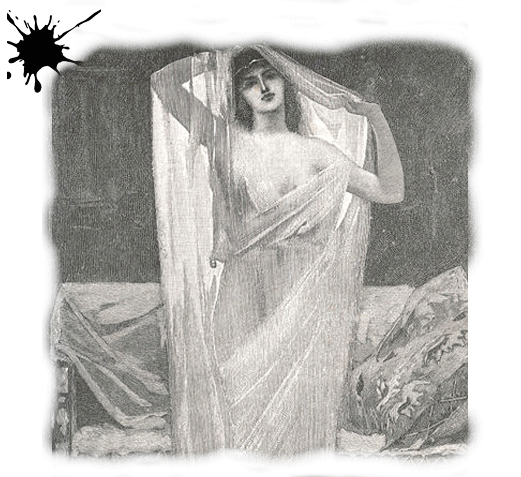

 Arthur Rackham
Arthur Rackham
(19 September 1867 - 6 September 1939)
Arthur Rackham has been the main influence of Brian Froud (Fairies, Goblin Companion, Lady Cottingham's Pressed Fairies Book) and has illustrated many of the most famous tales of his time. Rackham has illustrated one of the most beloved versions of Carol Lewis's....



Alexandre Dumas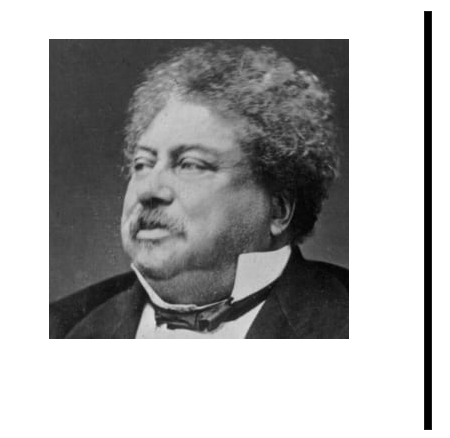
(24 July 1802 – 5 December 1870)
Alexandre was a French writer. His works have been translated into many languages, and he is one of the most widely read French authors. Many of his historical novels of high adventure were originally published as serials, including The Count of Monte Cristo, The Three Musketeers, Twenty Years After, and The Vicomte of Bragelonne: Ten Years Later. His novels have been adapted since the early twentieth century for nearly 200 films. Dumas' last novel, The Knight of Sainte-Hermine, unfinished at his death, was completed by scholar Claude Schopp and published in 2005. It was published in English in 2008 as The Last Cavalier.

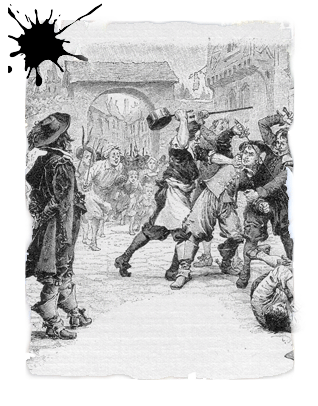

 Jane Austen
Jane Austen
( 16 December 1775 – 18 July 1817)
Austen was an English novelist known primarily for her six major novels, which interpret, critique, and comment upon the British landed gentry at the end of the 18th century. Austen's plots often explore the dependence of women on marriage in the pursuit of favourable social standing and economic security. Her works critique the novels of sensibility of the second half of the 18th century and are part of the transition to 19th-century literary realism. Her use of biting irony, along with her realism, humour, and social commentary, have long earned her acclaim among critics, scholars, and popular audiences alike.

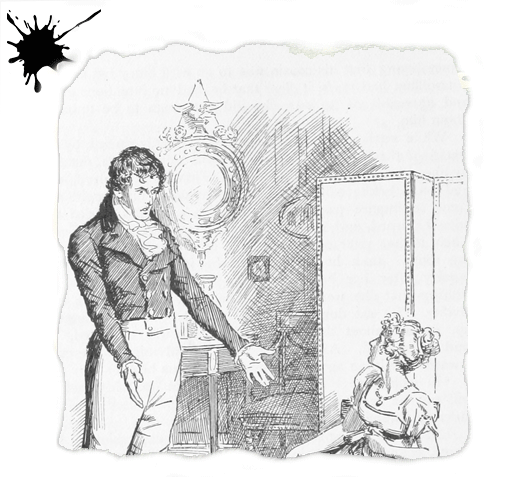

Oscar Wilde 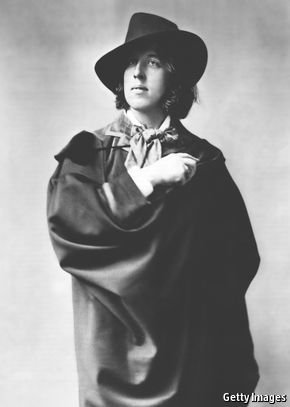
(16 October 1854 – 30 November 1900)
Oscar Fingal O'Flahertie Wills Wilde was an Irish poet and playwright. After writing in different forms throughout the 1880s, he became one of the most popular playwrights in London in the early 1890s. He is best remembered for his epigrams and plays, his novel The Picture of Dorian Gray, and the circumstances of his criminal conviction for gross indecency for consensual homosexual acts in "one of the first celebrity trials", imprisonment, and early death from meningitis at age 46.
Known for his biting wit, flamboyant dress and glittering conversational skill, Wilde became one of the best-known personalities of his day. At the turn of the 1890s, he refined his ideas about the supremacy of art in a series of dialogues and essays, and incorporated themes of decadence, duplicity, and beauty into what would be his only novel, The Picture of Dorian Gray (1890). The opportunity to construct aesthetic details precisely, and combine them with larger social themes, drew Wilde to write drama. He wrote Salome (1891) in French while in Paris but it was refused a licence for England due to an absolute prohibition on the portrayal of Biblical subjects on the English stage. Unperturbed, Wilde produced four society comedies in the early 1890s, which made him one of the most successful playwrights of late-Victorian London.
With his youth nearly over, and a family to support, in mid-1887 Wilde became the editor of The Lady's World magazine, his name prominently appearing on the cover. He promptly renamed it as The Woman's World and raised its tone, adding serious articles on parenting, culture, and politics, while keeping discussions of fashion and arts. Two pieces of fiction were usually included, one to be read to children, the other for the ladies themselves. The play, now considered Wilde's masterpiece, was rapidly written in Wilde's artistic maturity in late 1894. It was first performed on 14 February 1895, at St James's Theatre in London, Wilde's second collaboration with George Alexander, the actor-manager. Both author and producer assiduously revised, prepared and rehearsed every line, scene and setting in the months before the premiere, creating a carefully constructed representation of late-Victorian society, yet simultaneously mocking it. During rehearsal Alexander requested that Wilde shorten the play from four acts to three, which the author did. Premieres at St James's seemed like "brilliant parties", and the opening of The Importance of Being Earnest was no exception. Allan Aynesworth (who played Algernon) recalled to Hesketh Pearson, "In my fifty-three years of acting, I never remember a greater triumph than [that] first night." Earnest's immediate reception as Wilde's best work to date finally crystallised his fame into a solid artistic reputation. In a review of the play for The Pall Mall Gazette H. G. Wells wrote, "More humorous dealing with theatrical conventions it would be difficult to imagine. Mr Oscar Wilde has decorated a humour that is Gilbertian with innumerable spangles of that wit that is all his own". The Importance of Being Earnest remains his most popular play.


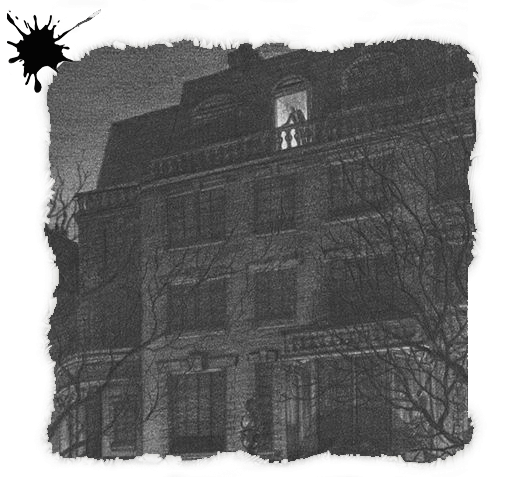

Charlotte Bronte
AKA Currer Bell
( 21 April 1816 – 31 March 1855)
Bronte was an English novelist and poet, the eldest of the three Brontë sisters who survived into adulthood and whose novels became classics of English literature.
She enlisted in school at Roe Head in January 1831, aged 14 years. She left the year after to teach her sisters, Emily and Anne, at home, returning in 1835 as a governess. In 1839 she undertook the role as governess for the Sidgwick family but left after a few months to return to Haworth where the sisters opened a school, but failed to attract pupils. Instead, they turned to writing and they each first published in 1846 under the pseudonyms of Currer, Ellis, and Acton Bell. Her first novel The Professor was rejected by publishers, her second novel Jane Eyre was published in 1847. The sisters admitted to their Bell pseudonyms in 1848, and by the following year were celebrated in London literary circles.
Brontë experienced the early deaths of all her siblings. She became pregnant shortly after her marriage in June 1854 but died on 31 March 1855, almost certainly from hyperemesis gravidarum, a complication of pregnancy that causes excessive nausea and vomiting.



Barbara Szafranski
She is the Salem Love Psychic esteemed throughout the nation for her healing abilities. She has been a guiding light in the Metaphysical world for over 30 years now. This is the first of many books she will be writing to help everyone on their own journey to bliss.


 Donna Girouard
Donna Girouard
Donna Girouard is an assistant professor of English at Livingstone College. She lives in North Carolina with her two rescue dogs and five rescue cats. When she's not teaching or writing, she works on her project vehicles: a 1978 Ford truck and a 1985 Pontiac Firebird.
Although her essays have been published in various literary magazines, The Other Side: Closing the Door is her first book-length collection.
Passionate about animal rescue, she is writing a nine book creative nonfiction children's series (The Adventures of Felix and His Furry Friends), part of the proceeds of which goes directly to specific animal rescue organizations.
She still hugs trees.
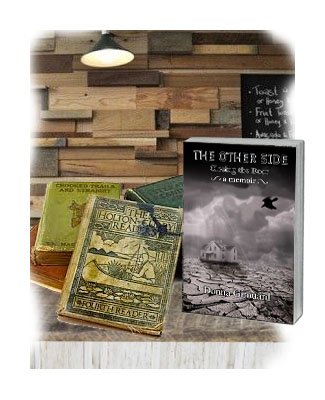

Ana Steele
Ana has written several articles for various publications. This was her first corporation with another to produce a play along with mi.


 Chris Corkum
Chris Corkum
Lead singer in the band 138, animator, illustrator, writer. After graduating from the Museum School of Art in Boston MA he went on to work for iconic animation company Olive Jar responsible for the early stop-motion animation MTV logos. The Silver Dancer Series started in a strip joint in LA and has festered in this interesting brain for over 30 years and the lead character has burst through more than her seams in her top to make her debut in Arkham: Tales from the Flipside.
Illustrator and Writer of tales in Arkham: Tales from the Flipside Winter 2021 Issue
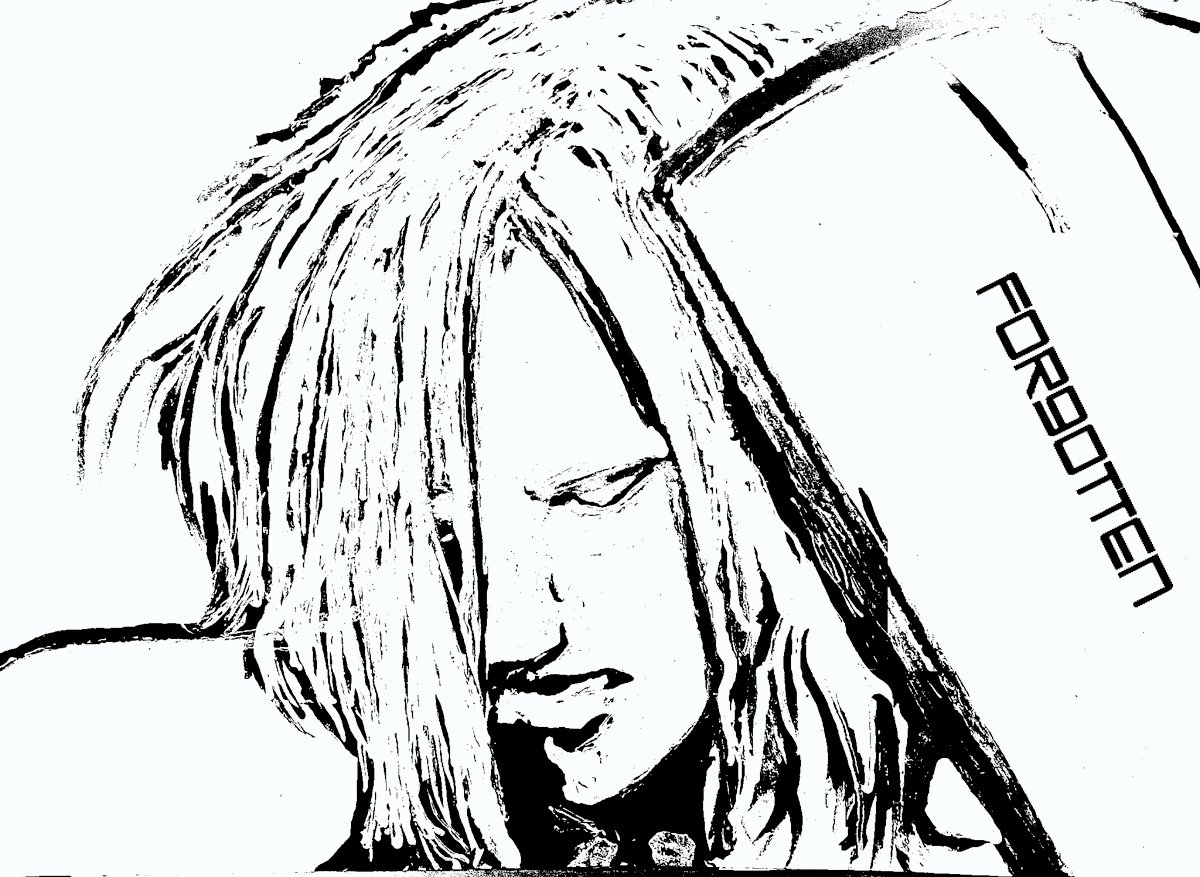

Salem native, hot shit, and the fastest thing on wheel sin Salem. Enjoy her imaginative perspective of this famous city!
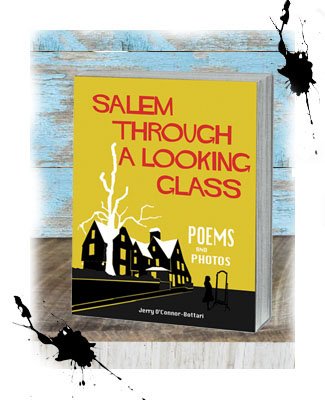

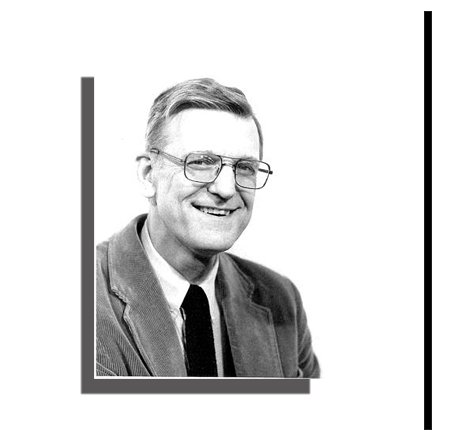 Peter R. Senn
Peter R. Senn
(November 22, 1923 – Dec. 11, 2007)
Dr. Peter Richard Senn, emeritus professor of economics and social science at Wilbur Wright College and a nationally recognized educator and authority on the history of social science. He was the author or co-author of three books, more than 50 scientific articles, and numerous other reports and studies. He was a president of the Illinois Economics Association and an editor of the journal.
Dr. Senn's research won him fellowships from the Ford foundations and several grants from the National Science Foundation. He was a founding member of several national organizations, including the American Veterans Committee and the Social Science Education Consortium. He helped to organize several unions including the Cook County College Teachers Union, Local 1600.
"He wanted to do things; he wanted society to be better, and sometimes his schemes were wonderfully crazy," said Don Borah, a former chair of Wright's social sciences department.
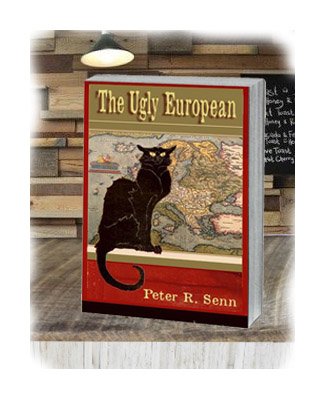

Lisa Deschenes 
Lisa is the author of the Salem Cemetery series of macabre literature. She is an early development educator and professor at Endicott College. She has lived in Salem her whole life and thrives in its 12 month out of the year Halloweenesque flavor. An avid car collector and hot shit.
Author of the series within the magazine Arkham:Tales from the Flipside
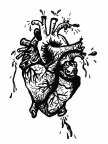
Illustrations by: Samatha King

 Dante
Dante
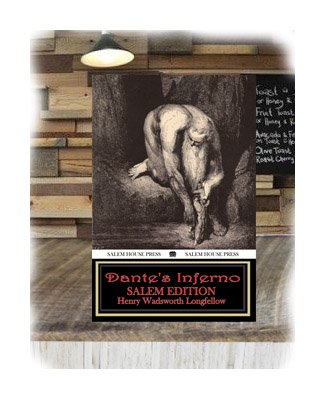
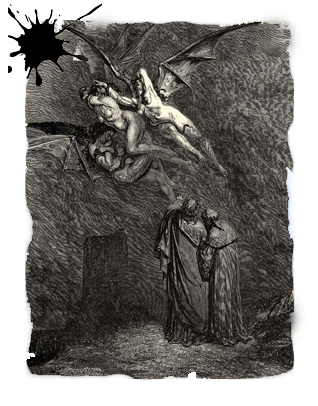
Written by Dante
(8 February 1828 – 24 March 1905)
Dante is known for establishing the use of the vernacular in literature at a time when most poetry was written in Latin, which was accessible only to the most educated readers. His depictions of Hell, Purgatory, and Heaven provided inspiration for the larger body of Western art and literature. He is cited as an influence on such English writers as Geoffrey Chaucer, John Milton and Alfred Tennyson, among many others. In addition, the first use of the interlocking three-line rhyme scheme, or the terza rima, is attributed to him. He is described as the "father" of the Italian language, and in Italy he is often referred to as il Sommo Poeta ("the Supreme Poet"). Dante, Petrarch, and Boccaccio are also called the tre corone ("three crowns") of Italian literature.
Illustrated by Gustave Dore
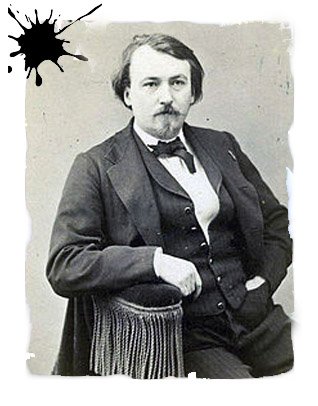
(6 January 1832 – 23 January 1883)
At the age of 15, Doré began his career working as a caricaturist for the French paper Le journal pour rire.[Wood-engraving was his primary method at this time. In the late 1840s and early 1850s, he made several text comics, like Les Travaux d'Hercule (1847), Trois artistes incompris et mécontents (1851), Les Dés-agréments d'un voyage d'agrément (1851) and L'Histoire de la Sainte Russie (1854). Doré subsequently went on to win commissions to depict scenes from books by Cervantes, Rabelais, Balzac, Milton, and Dante. He also illustrated "Gargantua et Pantagruel" in 1854.
In the 1860s he illustrated a French edition of Cervantes's Don Quixote, and his depictions of the knight and his squire, Sancho Panza, became so famous that they influenced subsequent readers, artists, and stage and film directors' ideas of the physical "look" of the two characters. Doré also illustrated an oversized edition of Edgar Allan Poe's "The Raven", an endeavor that earned him 30,000 francs from publisher Harper & Brothers in 1883. Doré's illustrations for the Bible (1866) were a great success, and in 1867 Doré had a major exhibition of his work in London. This exhibition led to the foundation of the Doré Gallery in Bond Street, London. Doré's later work included illustrations for new editions of Coleridge's Rime of the Ancient Mariner, Milton's Paradise Lost, Tennyson's Idylls of the King, The Works of Thomas Hood, and The Divine Comedy. Doré's work also appeared in the weekly newspaper The Illustrated London News. In total he at least illustrated 56 books.
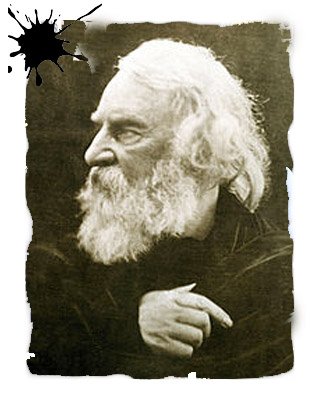
Henry Wadsworth Longfellow
(February 27, 1807 – March 24, 1882)
Longfellow was an American poet and educator whose works include "Paul Revere's Ride", The Song of Hiawatha, and Evangeline. He was the first American to translate Dante Alighieri's Divine Comedy and was one of the fireside poets from New England. His first major poetry collections were Voices of the Night (1839) and Ballads and Other Poems (1841). At Bowdoin College Longfellow met Nathaniel Hawthorne who became his lifelong friend.
He was one of Hawthorne's favorite speakers at the Salem Lyceum along with James Russell, Lowell who was helping Longfellow with translating Dante. The Salem Edition focuses on the birth of the Transcendentalist movement between Salem, Cambridge, and Concord. In fact James Russell Lowell came up from the abyss of the tunnels in Salem to read The Inferno for the first time in English at the Lyceum before the building was set ablaze.
He retired from teaching at Harvard in 1854 to focus on his writing, and he lived the remainder of his life in the Revolutionary War headquarters of George Washington in Cambridge, Massachusetts.

D.H. Lawrence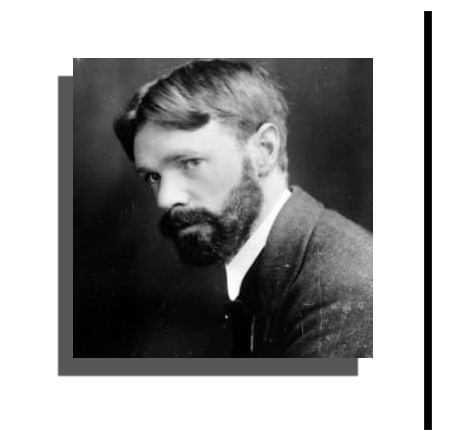
(11 September 1885 – 2 March 1930)
Lawrence was an English writer and poet. His collected works represent, among other things, an extended reflection upon the dehumanising effects of modernity and industrialisation. Some of the issues Lawrence explores are sexuality, emotional health, vitality, spontaneity, and instinct.
Lawrence's opinions earned him many enemies and he endured official persecution, censorship, and misrepresentation of his creative work throughout the second half of his life, much of which he spent in a voluntary exile he called his "savage pilgrimage". At the time of his death, his public reputation was that of a pornographer who had wasted his considerable talents. E. M. Forster, in an obituary notice, challenged this widely held view, describing him as "the greatest imaginative novelist of our generation." Later, the literary critic F. R. Leavis championed both his artistic integrity and his moral seriousness.
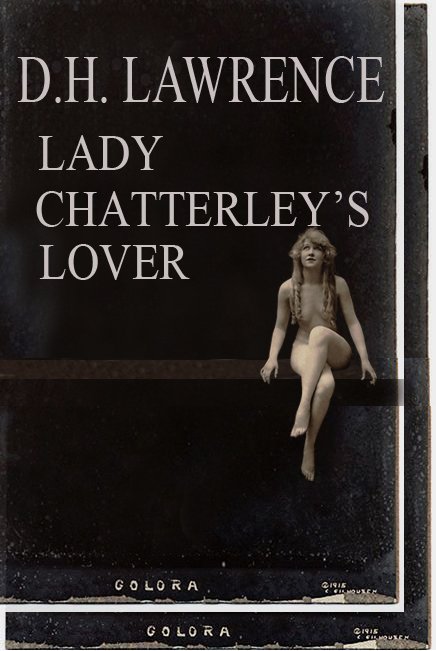

 J.M. Barrie
J.M. Barrie
( 9 May 1860 – 19 June 1937)
Barrie had a long string of successes on the stage after Peter Pan, many of which discuss social concerns, as Barrie continued to integrate his work and his beliefs. The Twelve Pound Look (1910) concerns a wife leaving her 'typical' husband once she can gain an independent income. Other plays, such as Mary Rose (1920) and Dear Brutus (1917), revisit the idea of the ageless child and parallel worlds. Barrie was involved in the 1909 and 1911 attempts to challenge the censorship of the theatre by the Lord Chamberlain, along with a number of other playwrights.
In 1911, Barrie developed the Peter Pan play into the novel Peter and Wendy. In April 1929, Barrie gave the copyright of the Peter Pan works to Great Ormond Street Hospital, a leading children's hospital in London.



Cory McNeil
Cory is an astute comedian and avid historian within the 'what if' genre of literature. He is the creator of the Red Sock show and author of the soon to be released novel Don't Invade Russia.
Author of the series within the magazine Arkham:Tales from the Flipside
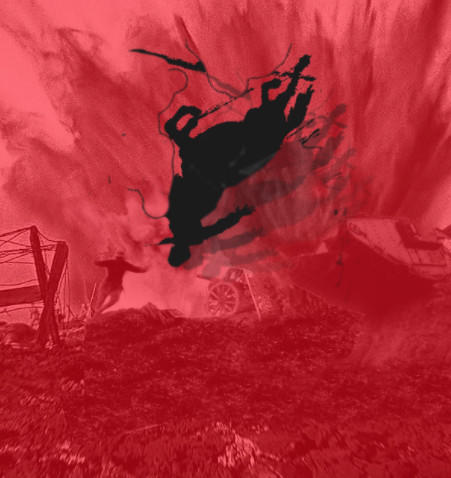

 Nick Demakes
Nick Demakes
What began with a fragmented drawing has evolved into a collection of limited prints, clocks, and original paintings.
After graduating Montserrat College of Art in 1994, Nicholas Demakes was finally free to pursue art within the horror and fantasy genre which was discouraged during his college years. Since then the subject matter of his work has evolved into a fantastical collection of sculptural clocks and original paintings including "Hellequin", based on the Harlequin Folklore of the Demon Huntsman and a twisted rendering of Raphael's "Cupid".
The mediums used by Nicholas in his art are often as unusual as his subject matter. Over the years he has developed a process of blending the more traditional oils and acrylics with such varied materials as radiator patches, fruit juices, and coffee grounds.
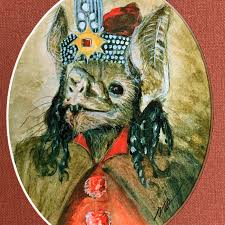

Jules Verne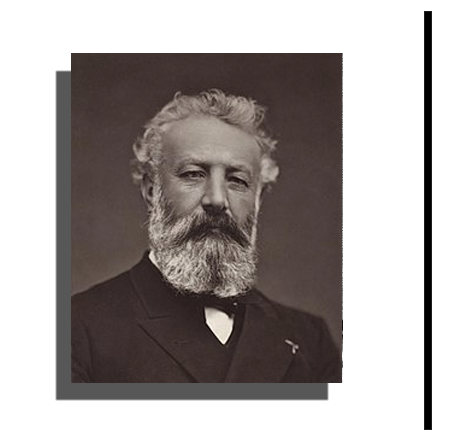
(8 February 1828 – 24 March 1905)
Verne was a French novelist, poet, and playwright. His collaboration with the publisher Pierre-Jules Hetzel led to the creation of the Voyages extraordinaires, a series of bestselling adventure novels including Journey to the Center of the Earth (1864), Twenty Thousand Leagues Under the Sea (1870), and Around the World in Eighty Days (1872).
Verne has been the second most-translated author in the world since 1979, ranking between Agatha Christie and William Shakespeare. He has sometimes been called the "Father of Science Fiction", a title that has also been given to H. G. Wells and Hugo Gernsback.
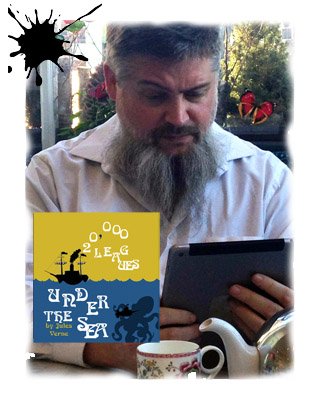
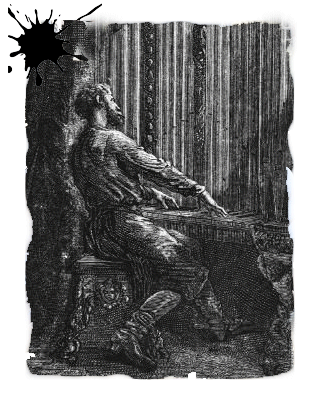

 Robert E. Howard
Robert E. Howard
(January 22, 1906 – June 11, 1936)
Robert E. Howard is famous for his characters Solomon Kane, Kull, and Conan the Barbarian. He was part of H.P. Lovecraft circle which included Clark Ashton Smith. All three wrote for Weird Tales magazine. After finding out his mother went into a coma Howard went out to his car and shot himself in the head in 1936. This was after his favorite illustrator quit Weird Tales as well. Lovecraft would die the next year.



Will Pirone
Will Pirone is an advent Beat who slipped into the realms of the hippies on Haight-Ashbury. One half of the duo Sweet Pie. A lyricist and harp player. Old Willie Boy has entertained folks at Joes Public Theater in NYC and thousands in Arizona. This book is the poetry that spans generations with the rythmn of a beat and the mind of a Hippie.


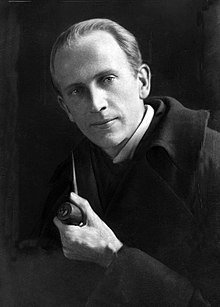 A. A. Milne
A. A. Milne
(18 January 1882 – 31 January 1956)
Milne is most famous for his two Pooh books about a boy named Christopher Robin after his son, Christopher Robin Milne (1920–1996), and various characters inspired by his son's stuffed animals, most notably the bear named Winnie-the-Pooh.[28] Christopher Robin Milne's stuffed bear, originally named Edward, was renamed Winnie after a Canadian black bear named Winnie (after Winnipeg), which was used as a military mascot in World War I, and left to London Zoo during the war. "The Pooh" comes from a swan the young Milne named "Pooh". E. H. Shepard illustrated the original Pooh books, using his own son's teddy Growler ("a magnificent bear") as the model. The rest of Christopher Robin Milne's toys, Piglet, Eeyore, Kanga, Roo and Tigger, were incorporated into A. A. Milne's stories, and two more characters – Rabbit and Owl – were created by Milne's imagination. Christopher Robin Milne's own toys are now on display in New York where 750,000 people visit them every year.
The fictional Hundred Acre Wood of the Pooh stories derives from Five Hundred Acre Wood in Ashdown Forest in East Sussex, South East England, where the Pooh stories were set. Milne lived on the northern edge of the forest at Cotchford Farm, 51.090°N 0.107°E, and took his son walking there. E. H. Shepard drew on the landscapes of Ashdown Forest as inspiration for many of the illustrations he provided for the Pooh books. The adult Christopher Robin commented: "Pooh's Forest and Ashdown Forest are identical."[30] Popular tourist locations at Ashdown Forest include: Galleon's Lap, The Enchanted Place, the Heffalump Trap and Lone Pine, Eeyore’s Sad and Gloomy Place, and the wooden Pooh Bridge where Pooh and Piglet invented Poohsticks.
Not yet known as Pooh, he made his first appearance in a poem, "Teddy Bear", published in Punch magazine in February 1924 and republished that year in When We Were Very Young. Pooh first appeared in the London Evening News on Christmas Eve, 1925, in a story called "The Wrong Sort of Bees". Winnie-the-Pooh was published in 1926, followed by The House at Pooh Corner in 1928. A second collection of nursery rhymes, Now We Are Six, was published in 1927. All four books were illustrated by E. H. Shepard. Milne also published four plays in this period. He also "gallantly stepped forward" to contribute a quarter of the costs of dramatising P. G. Wodehouse's A Damsel in Distress. The World of Pooh won the Lewis Carroll Shelf Award in 1958.
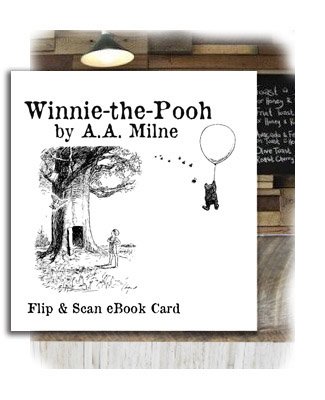
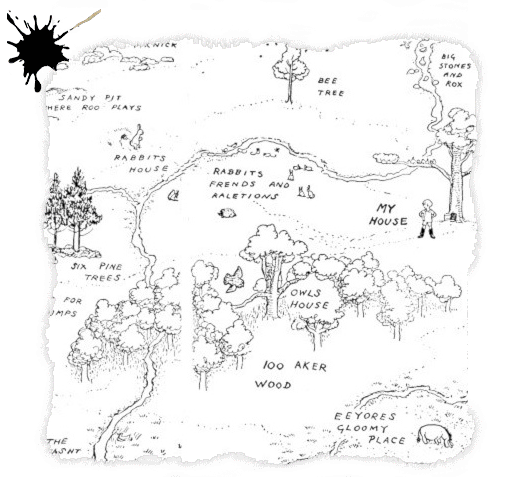

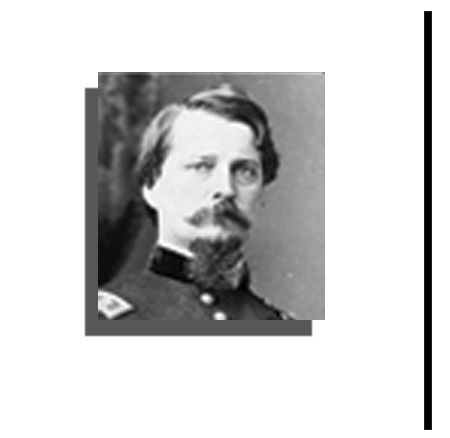 Winfield S. Nevins
Winfield S. Nevins
(December 6 1850 – October 23 1921)
His most permanently important work was Witchcraft in Salem Village, on which subject he was a recognized authority. Nevertheless, Mr. Nevins brought to his work in this field not only the perspective of a later century, but the intimate insight into motives and the keen discrimination in determining values which only a mind of rare breadth can compass. Mr. Nevins also won considerable note on the lecture platform, treating a wide range of subjects, both with and without accompanying stereopticon illustrations.
He was for many years proprietor and manager of the Salem Evening Telegram, for thirty-four years an active member of the Essex Institute, of Salem. Mr. Nevins had traveled much, both in the United States and abroad, having made nine trips to Europe. These subjects of vital civic import had for years been his study during his travels, and he accumulated information the comprehensive and exact nature of which was of the greatest assistance to various Salem bodies having these matters in charge. In fraternal circles Mr. Nevins was very prominent. He was at one time president of the Loyal Protective Association of Boston; was past grand master of the Grand Lodge of Massachusetts, Independent Order of Odd Fellows, and past noble grand of Fraternity Lodge, of Salem, in the same order, and was twice an appointive officer of the Sovereign Grand Lodge of Odd Fellows. He was a member of Starr King Lodge, Free and Accepted Masons, and for a number of years was manager of the famous Ye Honorable Boarde, a social club, of which he was a charter member. He was a man of deep religious convictions, and a member of the Universalist church.
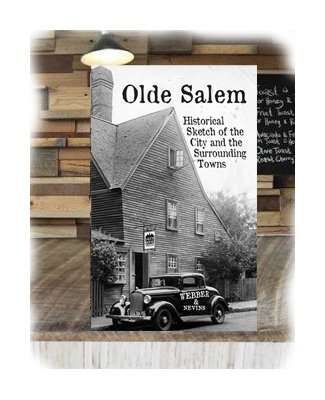
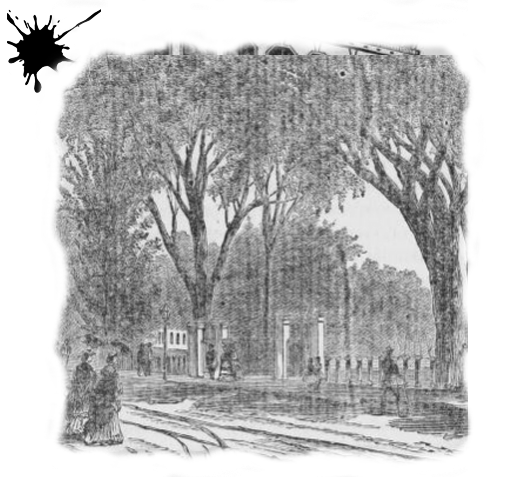








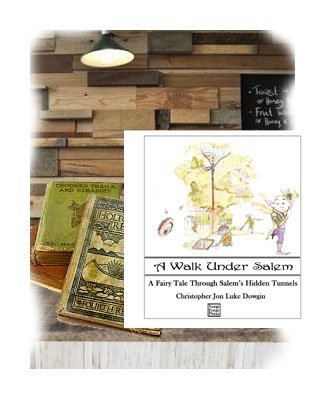
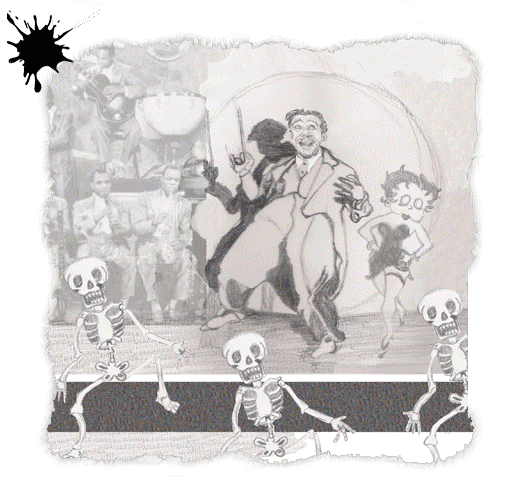























 Richard Aliberti
Richard Aliberti



 Matthew Fraser
Matthew Fraser








 L. Frank Baum
L. Frank Baum







 Arthur Rackham
Arthur Rackham




 Jane Austen
Jane Austen










 Donna Girouard
Donna Girouard


 Chris Corkum
Chris Corkum


 Peter R. Senn
Peter R. Senn


 Dante
Dante





 J.M. Barrie
J.M. Barrie



 Nick Demakes
Nick Demakes


 Robert E. Howard
Robert E. Howard



 A. A. Milne
A. A. Milne

 Winfield S. Nevins
Winfield S. Nevins







